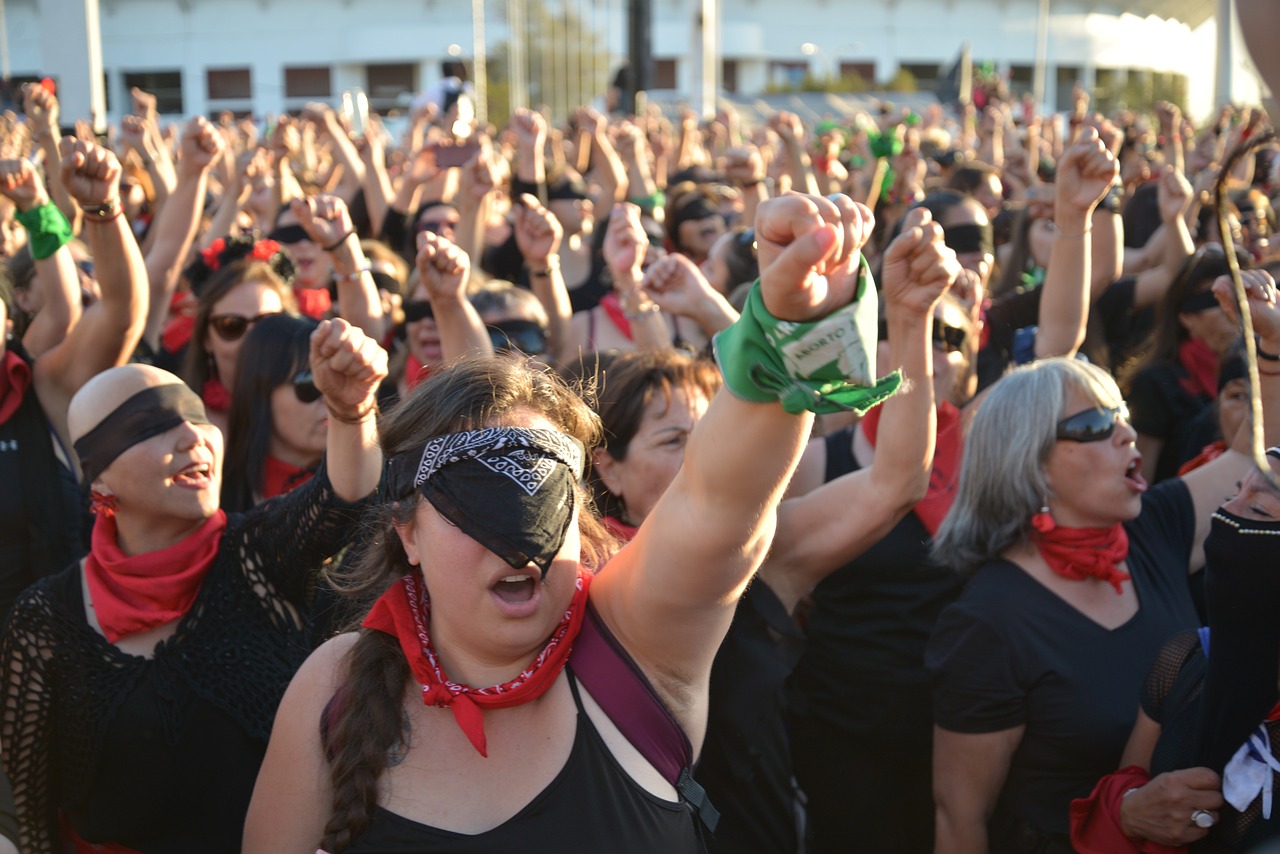A Fashion Statement that Changed the World: The Rise of the Mini Skirt

The Rise of the Mini Skirt
The 1960s was a decade of profound change, where cultural norms were challenged and new ideas blossomed. One of the most iconic symbols of this revolution was the mini skirt.
Can you recall the first time you saw a mini skirt? Perhaps it was on a young woman walking confidently down the street, turning heads and sparking conversations. The mini skirt was more than just a piece of clothing; it was a statement of freedom and individuality.
The Origins of the Mini Skirt
Introduced by British designer Mary Quant in the early 1960s, the mini skirt quickly became a sensation. But what led to its creation?
- Post-War Changes: The aftermath of World War II saw a shift in societal norms.
- Influence of Youth Culture: The rise of youth as a powerful demographic shaped fashion trends.
- Desire for Freedom: Young women wanted to express their independence and break away from traditional constraints.
Mini Skirt: A Symbol of Liberation
Wearing a mini skirt was revolutionary. It challenged the conservative views of femininity and modesty. How did this fashion choice resonate with women at the time?
| Impact | Description |
|---|---|
| Empowerment | Women felt empowered to showcase their bodies and embrace their sexuality. |
| Rebellion | Mini skirts became synonymous with the women’s liberation movement, symbolizing rebellion against patriarchal norms. |
| Expression | It allowed women to express their individuality and personal style. |
Iconic Moments and Cultural Significance
The mini skirt quickly became woven into the fabric of the 1960s culture. From music to films, it was everywhere. Can you think of any famous figures who embraced the mini skirt?
- Audrey Hepburn: Wore a mini skirt in “Breakfast at Tiffany’s”, making it a staple of chic fashion.
- Twiggy: The supermodel epitomized the mini skirt era with her youthful looks and energy.
- The Beatles: Influenced fashion and culture, indirectly popularizing the styles associated with the mini skirt.
Legacy of the Mini Skirt
Today, the mini skirt remains a fashion staple, but its significance transcends mere style. It represents a pivotal moment in women’s history. Reflecting on this, how do you think the mini skirt has influenced modern fashion?
The mini skirt was not just a trend; it became a lasting symbol of freedom and self-expression. Its legacy encourages future generations to embrace their identities boldly.
As we look back at the 1960s and the rise of the mini skirt, we see a reflection of the struggles and triumphs of women everywhere. The mini skirt was more than a fashion statement; it was a catalyst for change, inspiring women to celebrate their independence and challenge societal norms.
Breaking Conventions: How Mini Skirts Became Symbols of Freedom

Introduction to the Mini Skirt Revolution
The 1960s was a decade of significant social change, where traditional norms were challenged and reshaped. One of the most striking examples of this transformation was the rise of the mini skirt. But what was it about this garment that made it a symbol of freedom?
Emerging from the vibrant streets of London, the mini skirt was first popularized by fashion designer Mary Quant. It was not merely a fashion statement; it represented a shift in societal norms. As you recall, the post-war era had been characterized by conservative values, but the 1960s was all about breaking free.
Fashion as a Form of Protest
For many women, wearing a mini skirt was an act of rebellion against the conservative expectations of femininity. It was a way to assert personal freedom and challenge societal norms. Do you remember the feeling of liberation that came with expressing yourself through fashion? The mini skirt allowed women to showcase their individuality and assert their rights.
Mini Skirts in the Media
The media played a vital role in popularizing the mini skirt. Fashion magazines and television shows began featuring women in this daring attire, further embedding it into popular culture. As you think back to those times, can you recall any iconic images or moments that featured the mini skirt?
Beyond Fashion: The Social Impact
The mini skirt transcended fashion; it became a symbol of the feminist movement. Women were fighting for equality, and the mini skirt represented their desire for autonomy over their bodies. It was a visual declaration that women could dress as they pleased, reclaiming their identity in a male-dominated society.
Remembering the Mini Skirt Today
Today, the mini skirt remains a staple in many wardrobes. It serves as a reminder of the boldness of the 1960s and the ongoing journey towards freedom and equality. How do you feel when you see a mini skirt today? Does it evoke memories of a time when fashion was intertwined with social change?
Conclusion: The Lasting Legacy of the Mini Skirt
The mini skirt was more than just a piece of clothing; it was a declaration of independence. As we reflect on its impact, let us remember the courage of those who wore it and the changes it helped inspire. The mini skirt was not just a trend; it was a revolution.
From Mod to Mainstream: The Cultural Impact of the Mini Skirt Movement

Understanding the Mini Skirt
The mini skirt, a fashion staple that emerged in the 1960s, was not just a piece of clothing but a symbol of a broader cultural revolution. Would you like to explore how this garment transformed societal norms and personal expression during a pivotal time in history?
The Birth of the Mini Skirt
- Origin: The mini skirt was popularized by British designer Mary Quant, who aimed to create a youthful and liberating style.
- Influence: The garment was influenced by the mod culture, which embraced bold colors, geometric patterns, and an overall sense of rebellion against traditional norms.
Mini Skirts: A Symbol of Liberation
As the mini skirt gained popularity, it became intertwined with the women’s liberation movement. Would you like to consider how this garment represented the fight for autonomy and self-expression?
- Empowerment: Wearing a mini skirt allowed women to break free from the constraints of conservative fashion.
- Visibility: The mini skirt brought women’s bodies and choices into the public eye, fostering discussions around feminism and personal freedom.
Transitioning from Mod to Mainstream
The journey of the mini skirt from niche to mainstream fashion is fascinating. Shall we delve into how this transformation occurred?
| Era | Fashion Influence | Cultural Significance |
|---|---|---|
| 1960s | Mod Culture | Young women embraced freedom and self-expression. |
| 1970s | Disco and Pop Culture | Mini skirts became synonymous with nightlife and fun. |
| 1980s | Power Dressing | Women wore mini skirts confidently in professional settings. |
The Mini Skirt’s Lasting Legacy
Today, the mini skirt continues to be a popular choice for many. Would you like to reflect on its enduring presence in fashion and culture?
- Fashion Cycles: The mini skirt often returns to style, adapting to contemporary trends.
- Continued Symbolism: It remains a symbol of empowerment and self-expression for new generations.
The mini skirt’s journey from a bold statement of the 1960s to its current status in mainstream fashion reflects significant cultural shifts. How does this resonate with your understanding of fashion and personal expression throughout the decades?
Empowerment through Fabric: The Mini Skirt’s Role in Women’s Liberation
Understanding the Mini Skirt’s Impact
The mini skirt emerged as more than just a fashion statement in the 1960s; it became a symbol of freedom and independence for women. As you reflect on this era, consider how a piece of fabric could challenge societal norms.
The Cultural Shift
In the 1960s, women were beginning to break free from traditional roles. The mini skirt represented this shift:
- Feminism: The rise of the feminist movement empowered women to assert their rights.
- Fashion Revolution: Designers like Mary Quant popularized the mini skirt, making it a staple of youth culture.
- Expression of Individuality: The choice to wear a mini skirt became a personal statement of one’s identity.
Reactions and Controversies
The mini skirt was not without its critics. Many saw it as a challenge to traditional values. Reflect on these contrasting perspectives:
- Supporters: Advocates praised it for its role in promoting body positivity and self-expression.
- Opponents: Critics argued it was too revealing and undermined women’s dignity.
Empowerment Through Choice
Ultimately, the mini skirt was about choice. Women could decide how they wanted to present themselves to the world. It was a celebration of autonomy:
- Personal Empowerment: Wearing a mini skirt could boost confidence and assert one’s presence.
- Social Statements: Many women used fashion to express their views on women’s rights.
Even today, the mini skirt remains a powerful emblem of women’s liberation. As you think back to the 1960s, consider:
- Modern Interpretations: How do contemporary styles echo the sentiments of the past?
- Continued Relevance: What does the mini skirt signify in today’s ongoing discussions about women’s rights?
Conclusion: A Fabric of Freedom
The mini skirt was a revolutionary garment that transcended simple fashion. It became a canvas for women’s empowerment, allowing them to reclaim their identity and challenge societal norms. As you reflect on this piece of history, think about how far we have come and the journey that lies ahead.
The Mini Skirt Revolution: Tracing the Threads of Change in the 1960s
In the vibrant tapestry of the 1960s, one garment emerged as a symbol of change, rebellion, and newfound freedom: the mini skirt. This seemingly simple piece of clothing played a pivotal role in the cultural revolution of the decade, challenging societal norms and redefining women’s fashion.
The mini skirt was introduced in the early 1960s by British designer Mary Quant, who sought to create a style that embodied youth and liberation. But what was it about this skirt that sparked such a profound cultural shift?
Youth Culture: The mini skirt became a staple for the youth, representing a break from the conservative styles of previous generations.
Fashion Forward: It was bold, daring, and a stark contrast to the long skirts that dominated women’s fashion.
A Symbol of Liberation
For many women, wearing a mini skirt was not just a fashion statement; it was a declaration of independence. The 1960s saw an increase in women’s rights activism, and the mini skirt became intertwined with the broader fight for gender equality.
Societal Reactions
The rise of the mini skirt was met with mixed reactions. Some embraced it as a symbol of freedom, while others condemned it as inappropriate. Let’s explore the societal impact:
| Perspective | Reaction |
|---|---|
| Fashion Enthusiasts | Celebrated the mini skirt as a revolutionary change in women’s fashion. |
| Conservatives | Criticized it for being too revealing and undermining traditional values. |
| Feminists | Embraced it as a means of self-expression and liberation. |
Media Influence
The media played a crucial role in popularizing the mini skirt. Fashion magazines and television shows highlighted its appeal, making it a must-have item for women everywhere.
As the 1960s progressed, the mini skirt continued to evolve, influencing fashion trends for decades to come. Today, it remains a powerful symbol of the liberation movement.
The mini skirt revolution was more than just a fleeting fashion trend; it was a cultural phenomenon that represented the spirit of the 1960s. As we reflect on this era, we can appreciate how a simple piece of clothing became a powerful emblem of change and empowerment.
A Dance of Rebellion: The Mini Skirt as a Catalyst for Social Change
The 1960s marked a significant turning point in the fabric of societal norms, with the mini skirt emerging as a potent symbol of rebellion and freedom. This stylish garment did not just alter fashion; it was a bold statement of independence and a catalyst for social change.
Can you recall the first time you saw a mini skirt? Perhaps it was on a vibrant city street or in a lively gathering. The mini skirt, first popularized by designer Mary Quant in London, quickly became a symbol of youthful defiance.
- Fashion Icon: Mary Quant was instrumental in bringing the mini skirt to the forefront of fashion.
- Youth Movement: The garment resonated with the youthful spirit of the 1960s, representing a break from traditional norms.
Mini Skirts and Feminism
As women began to wear mini skirts, they also began to embrace a newfound sense of freedom. The mini skirt was not just a piece of clothing; it was a challenge to the patriarchy.
- Women’s Liberation: The feminist movement of the 1960s found an emblem in the mini skirt, symbolizing liberation from restrictive clothing.
- Self-Expression: Women used fashion to express their individuality and assert their rights.
A Cultural Phenomenon
The mini skirt transcended fashion, becoming a cultural phenomenon. It was featured in films, music, and art, influencing various aspects of popular culture.
| Aspect | Impact |
|---|---|
| Film | Movies began to showcase women in mini skirts, reflecting the changing attitudes towards femininity. |
| Music | Artists like The Supremes popularized the look, making it synonymous with the era’s music scene. |
| Art | Artists began to incorporate the mini skirt into their works, highlighting its significance in the cultural landscape. |
The mini skirt sparked both admiration and outrage. While many embraced the change, others resisted it, revealing the generational divide.
- Support: Younger generations celebrated the mini skirt as a symbol of freedom.
- Criticism: Older generations often viewed it as provocative and inappropriate.
Today, the mini skirt continues to be a staple in women’s fashion, reminding us of the bold spirit of the 1960s.
- Fashion Evolution: The mini skirt has evolved, adapting to modern styles while retaining its rebellious roots.
- Continued Relevance: The mini skirt remains a symbol of empowerment and self-expression for women worldwide.
The mini skirt was more than just a trend; it was a dance of rebellion that challenged societal norms and paved the way for future generations. As we reflect on its impact, let’s celebrate the courage it took to embrace change and the ongoing journey toward equality.
Generational Shift: How Mini Skirts Redefined Women’s Identity in the 60s
The 1960s marked a significant turning point in societal norms, especially regarding women’s fashion and identity. One of the most emblematic pieces of clothing from this era was undoubtedly the mini skirt. It was not merely a fashion trend but a statement of liberation and self-expression.
Fashion as a Reflection of Change
In the early 1960s, women began to challenge traditional norms. The emergence of the mini skirt could be seen as a visual representation of this rebellion. How do you think fashion reflects societal changes?
Mini Skirts: A Symbol of Freedom
The mini skirt, popularized by designers like Mary Quant, became a symbol of sexual liberation and feminist movements. It encouraged women to embrace their bodies and express their individuality. What memories do you have of women’s fashion during this time?
Impact on Women’s Identity
The mini skirt allowed women to break free from restrictive clothing that was often associated with traditional roles. As women donned shorter skirts, they also began to assert their presence in various fields including politics, arts, and sciences. Did you notice a change in women’s roles during the 60s?
Generational Perspectives
For older generations, the mini skirt represented a shocking departure from the modesty of previous decades. For younger women, it was a liberating garment that allowed for self-expression. How do you feel about the generational differences in fashion?
Table of Cultural Shifts
| Aspect | Before the 60s | During the 60s |
|---|---|---|
| Women’s Fashion | Conservative, long skirts | Mini skirts, bold colors |
| Social Roles | Domestic focus | Professional aspirations |
| Expression of Identity | Constrained | Empowered |
The mini skirt was more than just a garment; it was a catalyst for change that helped redefine women’s identity in the 1960s. It opened doors for new conversations about freedom, equality, and self-expression.
What lasting effects do you believe the mini skirt had on future generations?
Challenging Norms: The Mini Skirt’s Impact on Gender Roles
The Mini Skirt: A Symbol of Change
The 1960s was a decade of transformation, marked by social upheaval and a quest for equality. At the forefront of this cultural shift was the mini skirt, an article of clothing that transcended mere fashion to become a powerful symbol of women’s liberation.
Breaking Away from Tradition
Before the rise of the mini skirt, women’s fashion was often characterized by conservative styles that emphasized modesty. The introduction of the mini skirt challenged these norms, allowing women to express their individuality and assert their independence. Can you recall the first time you saw someone wearing a mini skirt?
Empowering Women
The mini skirt was more than just a trend; it was an assertion of freedom. As women began to wear shorter hemlines, they symbolically rejected the constraints imposed by a patriarchal society. The mini skirt became a statement of empowerment, encouraging women to embrace their bodies and claim their space in the world. How did this change influence your views on women’s rights?
Fashion and Feminism
The mini skirt’s popularity coincided with the rise of the feminist movement. Many women saw the garment as a way to challenge gender roles and advocate for equality. Do you believe that fashion can play a role in social movements? The mini skirt became a rallying point for women seeking to redefine their identity and societal expectations.
While many embraced the mini skirt, others viewed it as controversial, leading to heated debates about morality and decency. This dichotomy highlighted the societal struggle over women’s autonomy and the pushback against changing gender roles. What were some of the criticisms you remember hearing?
Today, the mini skirt is celebrated as a symbol of progress and liberation. It paved the way for future generations to challenge norms and assert their rights. Reflecting on its legacy, how do you think the mini skirt has influenced modern fashion and gender roles?
The mini skirt was not just a fashion statement; it was a revolutionary act that challenged societal norms and redefined gender roles. Its impact continues to resonate today, reminding us of the ongoing journey toward gender equality and self-expression.
Fashion, Feminism, and Freedom: The Legacy of the Mini Skirt
The 1960s marked a significant turning point in fashion, particularly with the introduction of the mini skirt. This bold garment became a symbol of freedom and liberation for women, challenging traditional norms and expectations. Are you ready to explore how this iconic piece of clothing transformed not just wardrobes, but also societal views on feminism?
Fashion designer Mary Quant is often credited with popularizing the mini skirt in the early 1960s. Inspired by the vibrant youth culture, she created a garment that would allow women to express their individuality and embrace their freedom. Do you remember your first encounter with this fashion trend? What feelings did it evoke?
The Mini Skirt as a Symbol of Feminism
As women began to wear mini skirts, they were not just making a fashion statement; they were also making a political statement. The mini skirt represented a break from the past—from restrictive clothing to a style that embraced body positivity and self-expression. How did this shift influence your perceptions of women’s rights during that era?
Social Reactions and Backlash
The introduction of the mini skirt was met with a mix of enthusiasm and criticism. While many celebrated this new freedom, others viewed it as a threat to traditional values. Did you witness any debates in your community regarding women’s fashion choices at that time? How did it affect your views?
The Legacy of the Mini Skirt
Today, the mini skirt continues to be a staple in women’s fashion, symbolizing the ongoing struggle for gender equality and self-expression. Its legacy is a reminder of the powerful changes that occurred during the 1960s. What does the mini skirt mean to you now, and how has your perspective evolved over the years?
Conclusion: Fashion as a Tool for Change
As we reflect on the impact of the mini skirt, it’s clear that fashion can be a powerful tool for social change. It invites us to question norms and embrace freedom. How do you think modern fashion trends continue to challenge societal norms today?
Celebrating Boldness: The Mini Skirt and the Spirit of the 1960s
In the landscape of the 1960s, a revolutionary change swept through the fabric of society, challenging norms and celebrating individuality. At the forefront of this movement was the mini skirt, a bold fashion statement that symbolized the newfound liberation of women. Let us take a journey through this vibrant era, exploring how the mini skirt became a beacon of freedom and self-expression.
First introduced by designer Mary Quant in London, the mini skirt was not just a piece of clothing; it was a declaration. It pushed the boundaries of fashion, encouraging women to embrace their bodies and express their personalities.
Symbol of Feminism
The mini skirt quickly transformed into a symbol of the feminist movement. Women began to reject the conservative styles of previous decades, opting instead for garments that reflected their independence and rebellious spirit. This shift was not merely about fashion; it was a profound statement about gender equality and personal freedom.
Fashion Icons and the Mini Skirt
Figures like Twiggy and Jean Shrimpton became fashion icons, showcasing the mini skirt on runways and magazine covers. Their influence helped to popularize this daring style, making it a staple in women’s wardrobes.
The Cultural Impact
Mini skirts were more than just clothing; they became a cultural phenomenon. The youth culture of the 1960s embraced this fashion, associating it with music, arts, and a lifestyle that celebrated freedom. The mini skirt was often seen at music festivals and protests, uniting women in a shared experience of boldness.
Interactive Experience
Let’s take a moment to reflect on what the mini skirt means to you. Think about:
Do you remember the first time you wore a mini skirt?
How did it make you feel?
What memories do you associate with this iconic piece of clothing?
Feel free to share your story or memories in the comments below!
Even today, the mini skirt continues to influence fashion and culture. It stands as a reminder of the boldness and liberation that characterized the 1960s, inspiring new generations to embrace their individuality.
The mini skirt was more than just a garment; it was a movement, a spirit, and a celebration of boldness. As we reflect on this iconic piece of fashion, let us remember the courage it took for women to wear it and the freedom it represents. Here’s to the spirit of the 1960s and the enduring legacy of the mini skirt!
